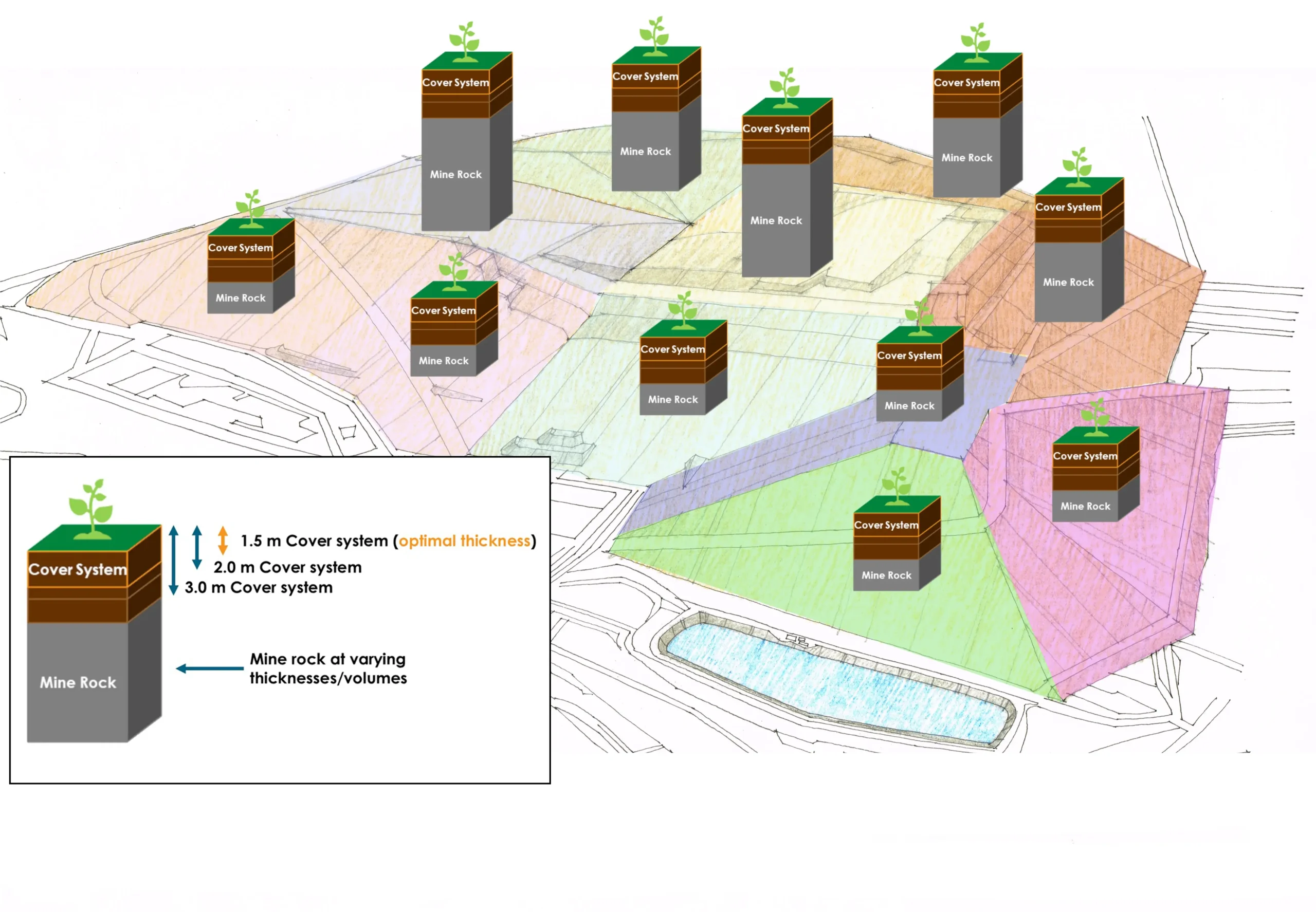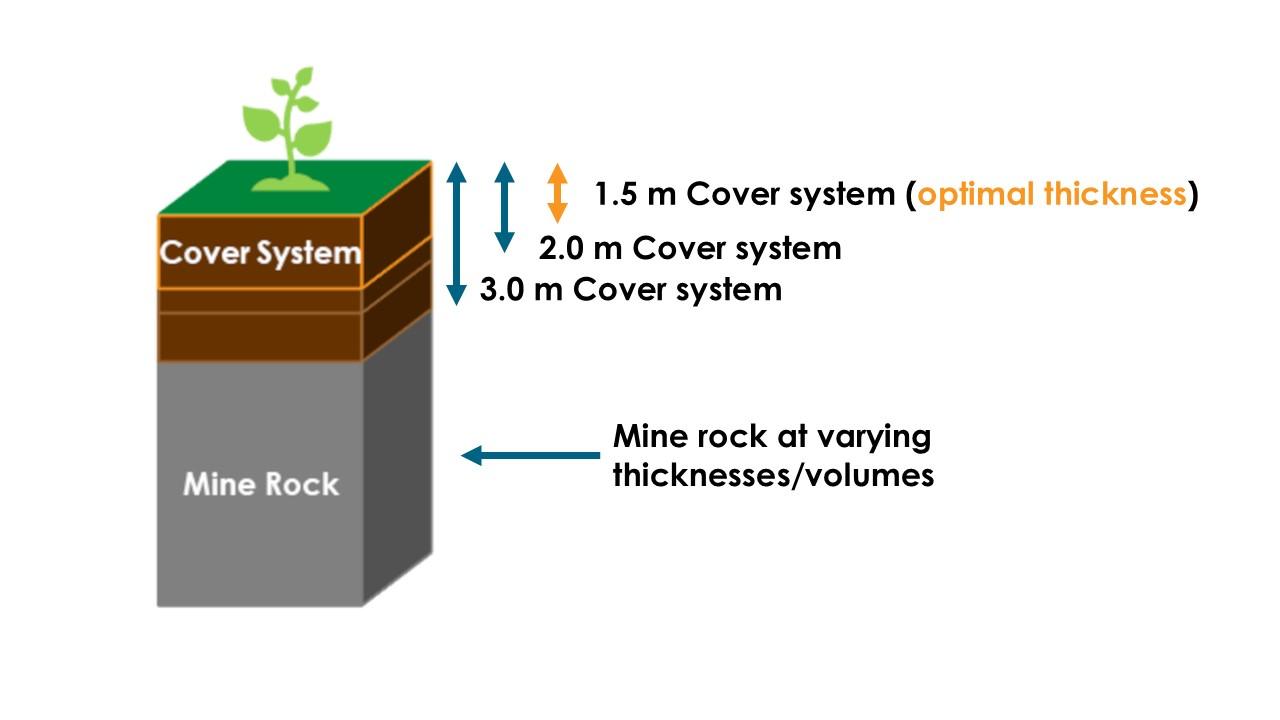- November 13, 2024

Water Quality Modelling to Assess Acid and Metalliferous Drainage (AMD) Risks
Water quality impacts from acid and metalliferous drainage (AMD) are a well-known challenge in the mining industry. When sulfide-bearing mine rocks are exposed to air and water, they undergo a chemical reaction that generates sulfuric acid, resulting in acidic runoff being generated. This can adversely impact downstream water quality in the receiving environment.
What makes AMD particularly critical is its potential to extend well beyond the operational phase of a mine—persisting through closure and into post-closure. The lasting impact of collecting and treating AMD can significantly increase closure liability. Untreated AMD can lead to regulatory non-compliance and negatively impact surrounding communities and environments. That’s why addressing AMD early and proactively is key.
At Okane, we understand the complexity of AMD and its implications for mine-affected water. We bring a comprehensive approach to understanding the geochemical characteristics of potentially acid-generating material and modelling the potential outcomes of different AMD management strategies. One of the core frameworks Okane uses to assess potential AMD risks is through our proprietary Mine Rock and Tailings Geo Evolution Model (MIRTAGE), developed as one of Okane’s internal research and development projects.
Enhancing Water Stewardship through Mine Rock and Tailings Geo Evolution Model
MIRTAGE is a framework that incorporates a range of models and tools to assess the potential for AMD across the different phases of the mine lifecycle. The MIRTAGE framework leverages advanced modelling tools, like GeoStudio and GoldSim, to develop an understanding of oxidation, seepage, and water quality over time. Its flexibility and agility allow us to think about AMD risks at the appropriate level of model complexity and apply it at a conceptual level or in a fully coupled numerical model, integrating GeoStudio and GoldSim.
Central to our MIRTAGE framework is the understanding that oxidation is the key driver in initiating the chain of processes and reactions that lead to AMD risk.
MIRTAGE modelling considers factors like the build-up of materials, the timing of cover placement, and climate data to calculate the water balance in the mine rock stockpile and tailings storage facilities. Through these calculations, we use net percolation and oxygen ingress data to generate detailed insights on the depth of the oxic zone, hydraulic retention times, total storage capacities, and seepage volumes from oxic and suboxic zones.
Our modelling results are then used as input to geochemistry models, allowing us to predict water quality outcomes. We tailor our models to the unique climate and material characterizations of each storage facility, adapting the level of detail based on the site’s unique requirements and conditions.
Applying MIRTAGE: Evaluating Cover System Performance Through Water Quality Modelling
One applied example of the MIRTAGE framework is demonstrated at a South American gold mine. This site is situated in a tropical region characterized by hot, humid weather and a distinct rainy season in the summer, falling under the Aw (equatorial-winter dry) climate classification in the Köppen-Geiger system.
The objective of the project was to assess cover system performance and its impact on AMD risk by modelling and evaluating water quality over time under four scenarios: bare mine rock and three cover systems overlying the mine rock at different thicknesses (1.5 m, 2.0 m, and 3.0 m).
Using soil-plant-atmosphere models, we calculated daily net percolation rates, using these results as inputs into 2D GeoStudio and distributed 3D GoldSim models. The 2D GeoStudio models provided insights into the depth and development of suboxia, which averaged around 5.0 m across the different cover thicknesses. The 2D models also showed that progressive reclamation, that is, placing the final cover system as soon as possible on completed areas of the landform, was substantially beneficial and should be included in the design.
The distributed 3D GoldSim model allowed us to build up the facility in the model lift by lift while using the Monte Carlo simulation to account for changes in material properties within each lift. The simulation provided a range of seepage and oxygen ingress rates that were used to inform on risks associated with each cover system option.
The predicted seepage rates were consistent under different cover thickness scenarios, suggesting that even the thinner cover performed similarly to the thicker cover alternatives.
Additionally, the rate of oxygen ingress remained steady across all cover designs, indicating that the 1.5 m cover was as effective as the thicker covers in controlling sulfide reactivity and improving water quality. This suggests the thinner cover design (1.5 m) could be used as it offers similar performance to the thicker cover designs while reducing material use and costs.

Figure 1. 1D column of mine rock in varying volumes with three different cover system thicknesses, highlighting the optimal thickness (1.5 m).

Optimizing Water Quality Outcomes with MIRTAGE
While both MIRTAGE and GeoStudio are valuable tools in our AMD risk assessment toolkit, MIRTAGE stands out for its efficiency in producing modelling results that provide a better definition of risk through the confidence intervals we generate.
Through the integration of the MIRTAGE framework into our risk assessment for AMD, we can develop mine rock stockpile designs and construction methodologies that incorporate source control measures to improve water quality outcomes.
At Okane, we are experts at leveraging advanced modelling tools like GeoStudio and GoldSim alongside our internally developed MIRTAGE software modules. By harnessing the integrated potential of these software packages, our Water Stewardship solutions help our clients make informed decisions on AMD and mine-affected water management strategies.
While we collaborate with clients to identify and mitigate AMD risks, we also help them explore opportunities to reduce closure costs over the long term, fostering sustainable and responsible mine closure practices.
For more information on how we can support your AMD risk assessment, please reach out to info@okaneconsultants.com.
